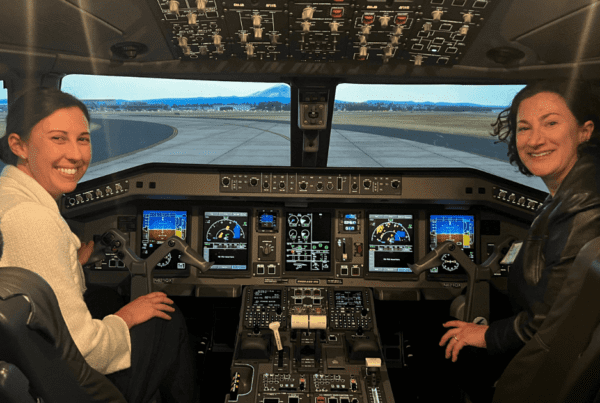Groundbreaking for a new health sciences teaching facility took place Aug. 27 on the UW south campus. When completed, the new building will bring together students from all six UW health sciences schools for interdisciplinary education and training.
The future health of the public relies, in many ways, on students in the health sciences. The education and experiences that future doctors, dentists, pharmacists, nurses, social workers and public health professionals receive will to a large degree shape how they work together when solving problems affecting people’s health.
While the UWs highly ranked health sciences schools have long focused on interdisciplinary education and training students to be part of seamlessly integrated teams, the space where much of that training takes place on the Seattle campus has been in need of a serious upgrade.
That upgrade is now officially underway as deans of the UW Health Sciences schools — Dentistry, Medicine, Nursing, Pharmacy, Public Health and Social Work — and Washington State legislators celebrated the start of construction of the Health Sciences Education Building with a small, physically distanced groundbreaking.
The four-story building will be situated on Pacific Avenue NE in the space west of the T-Wing of the Health Sciences Complex.
“This new facility will enable our students across the full range of health sciences to work in a setting that better mirrors the way they’ll be engaging in patient care as professionals,” said UW President Ana Mari Cauce. “This will result in better care for the patients they serve, because we’ve seen the benefits that come from coordinating various health disciplines, rather than keeping them siloed.”
The Health Sciences Education Building will be where students learn integrated patient care in an integrated training facility. The 100,000 square-foot, four-story, $100 million, fully modern facility received $70 million from the Washington state Legislature. The University is seeking an additional $30 million in private support from community members through naming opportunities and donations to complete funding for the building.
“I am proud to have worked with my legislative colleagues to support this project with nearly $70 million in state capital funds. Ensuring that UW health sciences students have access to state-of-the-art interdisciplinary training facilities is critical to our state’s health care workforce pipeline,” said Sen. David Frockt (D-46th District).
The new building is designed around flexible spaces that allow for 21st-century teaching techniques, including high-tech learning facilities used for computer simulation, mock treatment labs and an ultra-modern UW Medicine Anatomy Lab Suite with virtual anatomy capabilities.
The facility will also enable robust remote learning access for students and professional who are part of UW Medicine’s multi-state medical education program — WWAMI, which stands for the states served by the School of Medicine: Washington, Wyoming, Alaska, Montana and Idaho.
“We and our educational partners in this five-state region look forward to the outstanding opportunities the new facility will provide for health professional students and faculty. It will dramatically increase training opportunities for students across the region,” said Dr. Paul G. Ramsey, CEO of UW Medicine and dean of the UW School of Medicine.
“Together students will learn to excel at addressing the healthcare needs of individuals, families and the public. This will be accomplished through pooling of their professional knowledge and expertise in the best interest of their patients,” said Ramsey. He noted that this would be the campus’ first new building in more than 50 years for teaching the health sciences, since the T-wing opened in the 1970s.
In addition, the health sciences deans envision a building with the capacity and immediacy for students to share ideas, images and projects in classrooms and in their working teams. The finished building also will have a library extension that is integrated into the main classroom floor to help students engage evidence in their learning, gain skills in navigating resources and benefit from coaching about how to use library tools and resources in their project work.
Fifty years ago, the average person was under the care of three health-care professionals. Now, the average healthy person relies on 16 professionals for their overall health care. Consequently, integrated patient care is increasingly necessary for the future of health services. The building will be a hub that fosters the offering of interaction and leading-edge training necessary for recruiting and retaining talented students and faculty — critical to maintaining the UW’s top-ranked educational programs in all the health professions.
“The Health Sciences Education Building is a state-of-the-art facility that will prepare the next generation of professionals for a more collaborative, more collegial role as part of interprofessional teams to address today’s health care needs. From pandemics to health equity, the nation’s first integrated health sciences training facility will provide students with a high-tech learning space to develop solutions to global issues affecting population health,” said School of Nursing Executive Dean Azita Emami, who is also chair of the Board of Health Sciences Deans.
The building is expected to be completed in mid-2022.
The architect is Miller Hull Partnership and the contractor is Lease Crutcher Lewis. They will both work with SLAM on a progressive design-build delivery method for the project.
Watch the building take shape live, as well as time lapse videos, on the site monitoring web cam.
Written by Jake Ellison, UW News.
UW Medicine media contact: Leila Gray contributed to this report and can be reached at leilag@uw.edu, 206.475.9809.
Originally published on the UW Medicine Newsroom.


